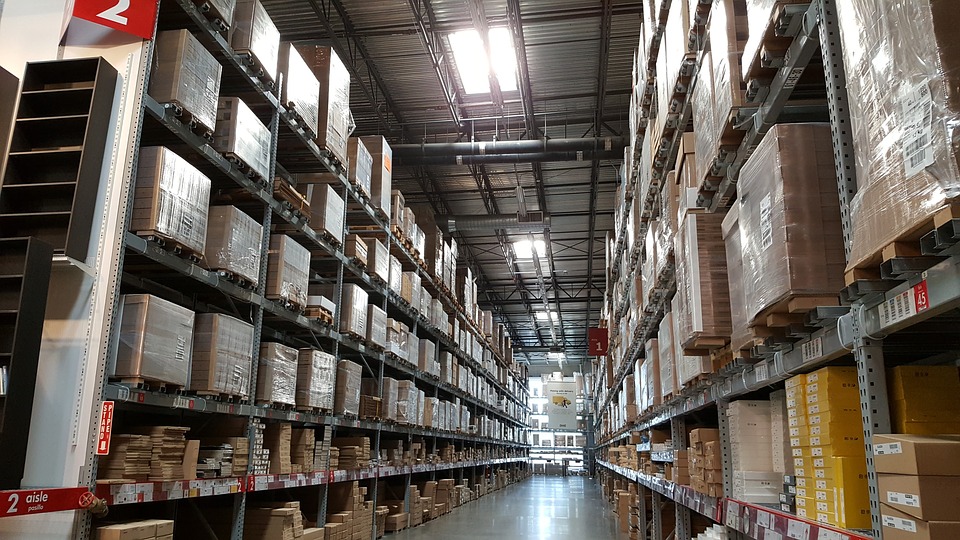The True Costs of Carrying Inventory for Businesses
Post on Tuesday, May 8th, 2018 in Accounting

Every business owner should be aware that the true inventory cost goes far beyond the purchase cost. Actually, there are the following types of inventory costs:
- ordering costs or setup costs
- carrying costs or holding costs
- stock-out costs or shortage costs
When you store your inventory in a warehouse or any other similar property, you encounter inventory carrying cost, which may also contain some hidden payments. Actually, such carrying costs represent approximately 25% of inventory value on hand. For example, if the total inventory value is $10,000, then the amount of the inventory carrying costs will be $10,000 x 0.25 = $ 2,500.
Therefore, it is crucial to account for the holding cost in order to avoid situations when your inventory becomes wasted, redundant, lost, or damaged.
The carrying cost typically falls into the following categories:
- Inventory capital costs. The capital costs usually make up the largest percentage of the total carrying cost. They may include the purchase cost, interest that is paid on a purchase, interest that is lost when cash turns into inventory, etc.
- Inventory storage space costs. The storage space costs are expenses that are related to keeping your inventory safely organized in a specific place, such as a warehouse. The storage costs include the storage space rent, lighting, heating, security, warehouse workers’ salaries, materials handling costs, etc.
- Inventory service costs. These costs are associated with insurance, taxes, and inventory management software. You may need an insurance to cover your inventory in the event of natural disasters, theft, or accidents. Besides, you must pay taxes on the inventory levels that are kept on hand. Finally, you need a reliable inventory management system if you have to track a large amount of inventory items.
- Inventory risk costs. Keeping inventory implies certain risks, such as inventory shrinkage, depreciation, expiration, or too much inventory on hand. As a result, you either lose valuable inventory items and thus lose money or need to sell the depreciated, excessive, or nearly-expired items at a lower price, which also results in losses.
How To Calculate Holding Costs
You can use a special carrying cost formula:
Carry Cost of Inventory = (Capital + Taxes + Insurance + Warehouse + (Scrap – Recovery Costs) + (Obsolescence – Recovery Costs)) / Average Annual Inventory Costs
Now you are familiar with the carry cost formula and know what are holding costs. Next, let’s take a look at some methods that may help you reduce inventory holding costs.
- Use alternative inventory management methods, such as drop shipping, cross docking, or selling on consignment.
- Drop shippers purchase products from suppliers and then ship them directly to the customer, without storing them at a warehouse.
- During cross docking, products are shipped to the warehouse and offloaded to one side of the dock. Then they are sorted according to their destination and immediately loaded onto another truck at the other end of the dock. As a result, the products spend no time in the warehouse.
- Selling on consignment involves placing the products directly in the retail store, because the retailers want to see how such goods will sell, and again, no storage space is required.
- Conclude long-term contracts both with your customers and suppliers and make sure that these contracts partially cover your inventory carrying cost.
- Redesign your storage space. Modify the design and layout of your warehouse to optimize your storage space and thus lower the holding cost. You can invite an external design specialist who will analyze your warehouse for possible design flaws, such as high storage density or amount of free space in the aisle areas.
- Calculate the inventory turnover ratio according to this formula: Cost of Goods Sold / Average Inventory. If the ratio is too low, then it is a sign that your business spends too much on holding costs.
- Be careful with minimum order quantities. Many suppliers do not accept orders the amount of which is lower than the specified minimum but offer attractive prices on such big quantities. However, this may result in too much inventory on hand and thus spending more on carrying cost rather than saving. Try to find suppliers with more affordable options or find a compromise with your existing suppliers.
- Be aware of your reorder point. In other words, know the amount of items remaining on hand and when you should reorder them from your suppliers. You can set up the automatic reorder point value by using specialized inventory management software.
- Get rid of obsolete inventory. Inventory that you no longer need takes up valuable space in your warehouse and adds extra carrying costs. You can sell or donate such items in order to free up the storage space.
Inventory carrying costs can cause you lots of headache. However, when managed in the right way, they can be significantly reduced.

Adam is the Assistant Director of Operations at Dynamic Inventory. He has experience working with retailers in various industries including sporting goods, automotive parts, outdoor equipment, and more. His background is in e-commerce internet marketing and he has helped design the requirements for many features in Dynamic Inventory based on his expertise managing and marketing products online.
Learn how Dynamic Inventory can streamline your business today!
Schedule a DemoRelated Articles
see all
An Overview of Dell’s Supply Chain Strategy
Dell entered the market in 1985, and evolved from a small, dorm-room based company in Texas to one of the …

How to Improve Your Warehouse Management System
A warehouse is not only a place to store your inventory. It also hosts all of the important logistics and …

How To Write Product Descriptions That Actually Convert To Sales
A product description should not just be a bland list of a product’s features. After the price of an item, a …

